Our Galapagos Adventure: Part 2
Having spent the past two weeks cruising the inner islands of the Galapagos, click here for Part 1, we were amped to pick up our guests and start voyaging anew, heading further afield this time and encompassing the largest island in the group – Isabela.
Again our trusty guide, Franklin, was onboard, and this time, like seasoned Galapagos ‘old hands, we were off…
DAY 1: Baltra
Having stayed in Baltra to pick up fuel, it made sense to start our second voyage from here. Anchored just off the airport, we could see the little plane carrying our guests’ land and it took only minutes to get everyone onboard, bags stowed and away for an afternoon sail to the South Plazas.
It’s remarkable how, in such a short time, the little rain we’ve had has transformed the landscape. When we arrived the shoreline vegetation was silvery-blue, the land looked parched, sun-scorched and bleached. Now, the land is alive, with blankets of bright greens, and after each rain, the warm scent of the soil fills the air, like a thankful breeze.
We arrive in time for sunset, dropping anchor just in time for cocktails!
DAY 2: South Plazas
We’re back at Gordon Rocks for another dive. This time, the sea is unusually calm, the currents are gentler, though the water is cooler. A single hammerhead swam past, but it was the larger Galápagos sharks that seemed particularly inquisitive—though perhaps it was us who were more curious about them. The second time round we got to know the dive site better and we were able to spend more time looking at the smaller creatures, not just the large pelagics.
After lunch we had a leisurely sail down Santa Fe Island. Here the rains had worked their magic and the once brown cacti were bursting with big yellow blossoms that the iguanas of the same colour were greedily eyeing up for dinner.
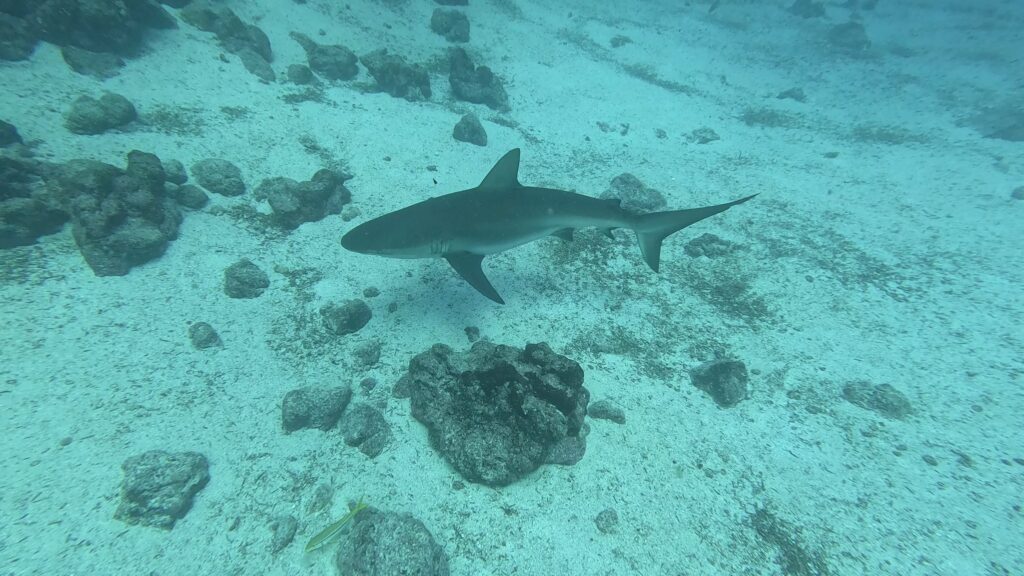
DAY 3: Floreana
An early morning start saw us sail 5 hours down to the island of Floreana.
Floreana Island has, arguably, the most interesting human history of all the Galapagos Islands. It is the site of the first “post office”, established in 1793 by whalers. Here an open barrel served as an informal mail exchange, where passing ships could leave letters for others to pick up and deliver. The tradition lives on today and we ‘posted’ our postcards, with the hope that another traveler will one day come along and deliver them to us.
Floreana was also the backdrop to a series of mysterious events involving some of the first European settlers in the 1930s. A story of intrigue, disappearances, romance and death captivated global attention at the time. It certainly captivates to this day and we eagerly delved into this incredible tale. We highly recommend watching The Galápagos Affair—it’s so astonishing, it hardly seems real.
Heading inshore from Post Office Bay we walked inland to a lava tunnel. We headed down into the underbelly of the island and took a very refreshing swim in the freezing salty waters that filled the tunnel, making it more exhilarating when we turned all our torch lights off.
In the afternoon we donned our snorkeling gear and headed to the Devil’s Crown – we were warned that the snorkeling would be either excellent or terrible – what we weren’t told was that it would be life-changing! At first, we saw a few splashes ahead of us and the telltale woosh of a blowhole. Then, out of nowhere, we were surrounded by a massive pod of bottlenose dolphins. We were swimming with hundreds of them! Their chattering and squeaks echoed around us as we marveled at their playful underwater dance—an unforgettable experience!
It was hard to beat a day such as this, and we capped it off with a relaxed walk ashore to see some friendly sealions, and shy pink flamingos.
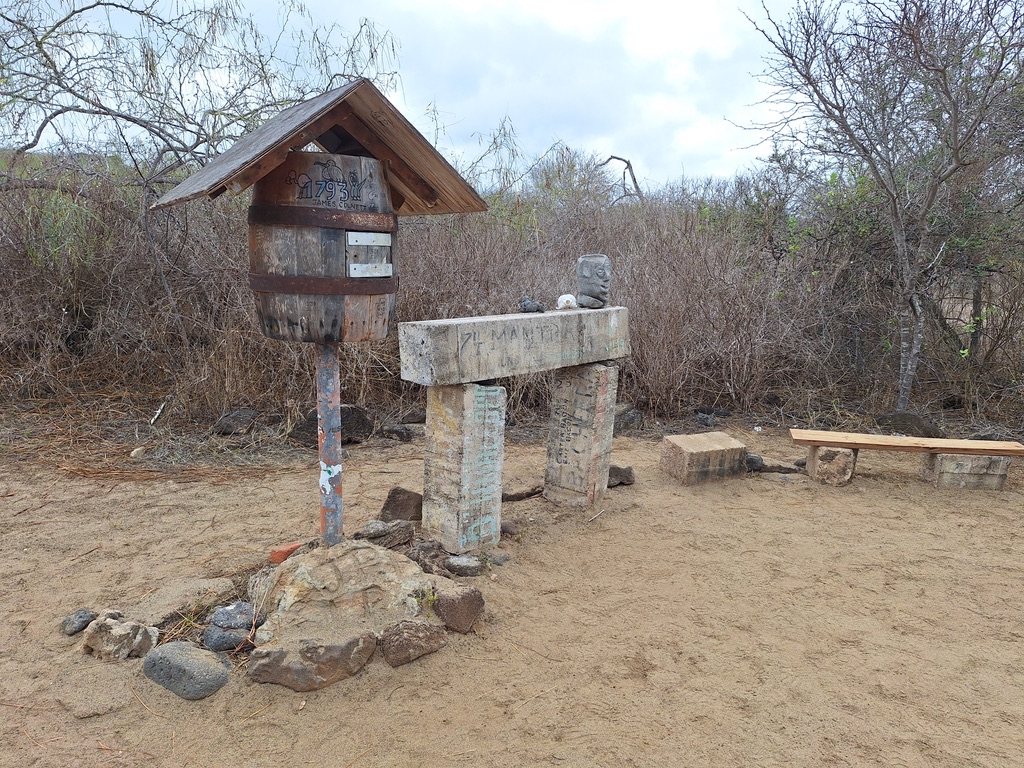

DAY 4: Isabela
We started the morning with a dive, expecting it to be a laid-back and easy one. However, on first splash into the water the current proved exceptionally strong and as we descended, we quickly had to use all our diving skills to maintain position. The dive, known for its sea lions, turned out to be the most technical one we’d had. Meanwhile, a few sea lions effortlessly floated around us, likely amused by our struggles!
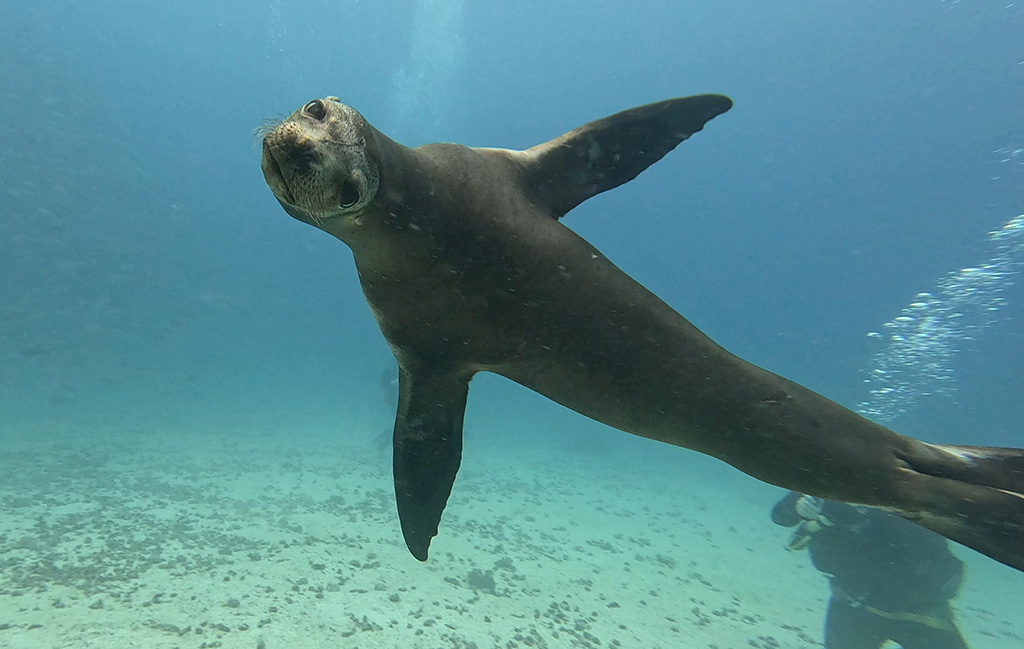
The afternoon gave us time to relax as we sailed the forty nautical miles to the bottom of Isabela and the Port town of Villamil.
Villamil is the most beautiful townsite in Galápagos. Most of Isabela’s residents live here and until recently, the population was primarily involved in fishing and agriculture and had little connection to tourism. Then in the 1990s, development in tourism began in earnest. A small airport was completed in 1996 for inter-island flights and the number of hotels grew from a single hotel in 1980 to 13 hotels by 2006.
We dropped anchor, to be immediately surrounded by baby black-tip sharks, that circled around the boat in their dozens as the sun set. Eager to explore, ashore we jumped in a local water taxi and headed into the town, to be rewarded with a feast at the Iguana’s Crossing Restaurant. The highlight was the fantastic Cazuela Mixta Camarón – a local hearty seafood stew.
DAY 5: Sierra Negra Volcano
We began the day early, heading into Puerto Villamil to hop into pickup trucks that took us up to Sierra Negra Volcano. This majestic volcano is one of the most striking in the archipelago, with a caldera measuring 10 km north to south and 9 km east to west, making it the second-largest active caldera in the world.
Shrouded in clouds, we left the trucks behind and walked to the sulfur mines. As we reached the caldera’s edge, an incredible vista unfolded before us. We descended to the western side, where the yellow-stained ground of the mines revealed an otherworldly landscape shaped by intense geothermal heat.
On our way back to town, we stopped at the Arnaldo Tupiza Tortoise Breeding Centre, offering a fascinating insight into the conservation efforts that support the survival of the five native tortoise species on Isabela.

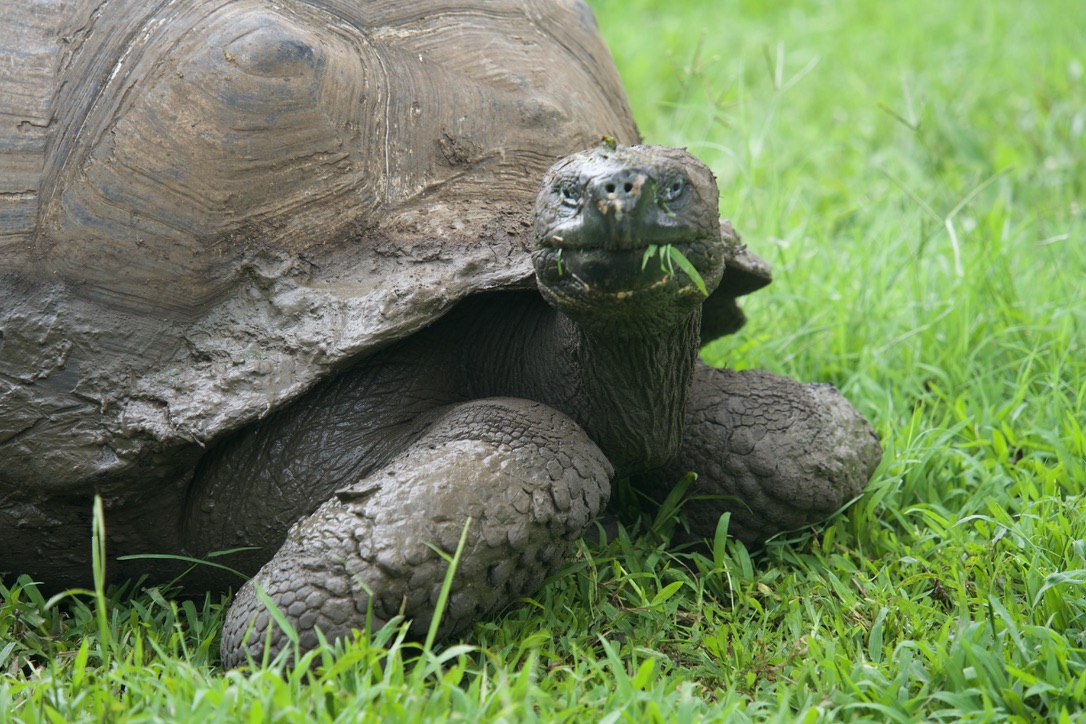
DAY 6: Punta Moreno, Isabela
A longer sail this morning, of about 58nm, where we hugged the southern and western coasts of Isabela as we headed to Punta Moreno. All onboard were out early in eager anticipation of some whale spotting – unfortunately none so far!
By late afternoon we had dropped anchor, just in time for a quick hike ashore to visit one of the most recent lava flows in the archipelago. At first glance, the black rock seemed lifeless, however, on further examination was dotted with numerous lagoons containing a wide variety of life. In the Galapagos life always seems to find a way.
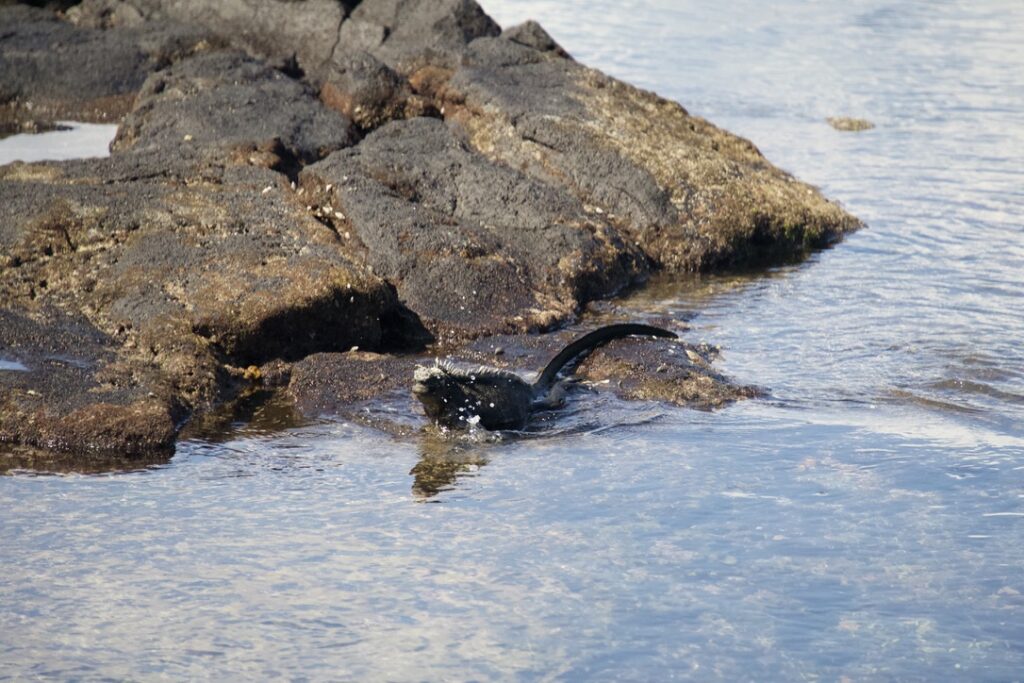
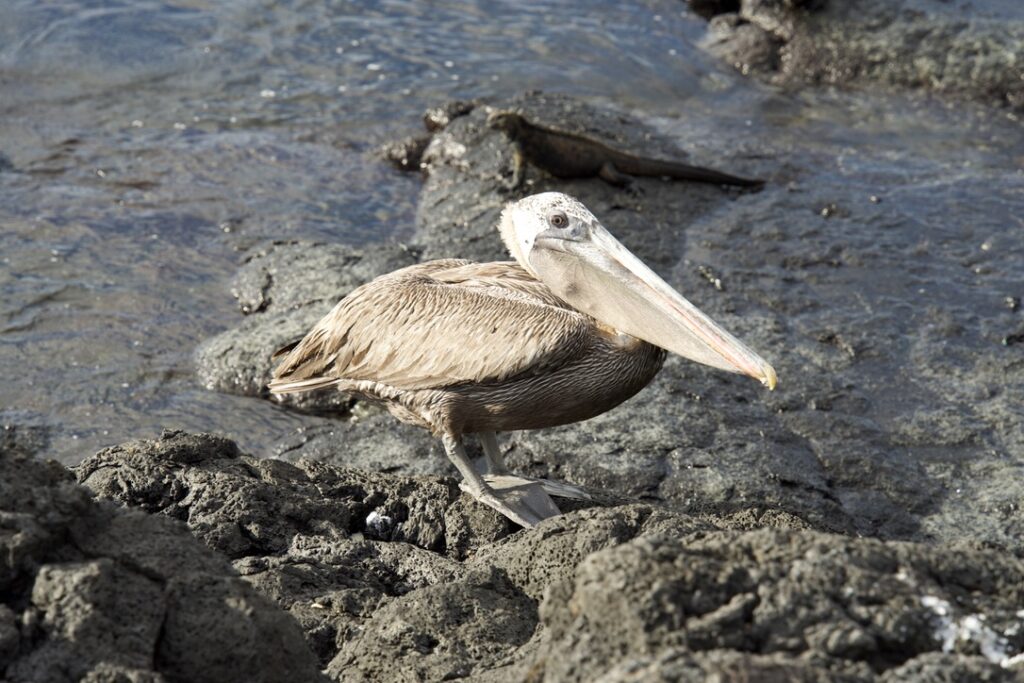
DAY 7: Punta Espinoza, Fernandina
A morning sail up the western coast of Isabela, lasting three hours, revealed a strikingly different landscape. The rugged shoreline was defined by volcanic cones, with dark, barren blacks and browns contrasting sharply against the lush greens of the interior highlands.
The amount of marine wildlife around us was astonishing—exclamations of “What’s that?” followed by “Oh, it’s just another manta ray” or “Just another sea lion” became common. We quickly chastised each other for becoming so blasé so quickly!
We anchored off Fernandina Island, the famous home to marine iguanas, and immediately set out on a hike to visit its renowned inhabitants. Fernandina is one of the most pristine places on Earth, as no animals have ever been introduced here, preserving its ecosystem intact. Though the landscape appeared barren at first, Punta Espinoza boasts the highest population density of marine iguanas in the Galapagos, with these creatures found on nearly every inch of land. The space is also shared by sea lions, who seemed to take great pleasure in annoying the iguanas as they swam past. We also had our first sighting of the Galapagos flightless cormorants – a bird much bigger than their flying counterparts elsewhere with stubby, almost comical wings and a great example of adaptive evolution.
In the afternoon, we headed to Punta Vicente Roca on the northern tip of Isabela. Unsure of what to expect, we were unprepared for the stunning anchorage that awaited us. Towering red cliffs, nearly 1,650 feet high, loomed above us, making Bundalong feel small against the vast vista. It felt as though we were truly on the edge of the Galápagos—the water was deep, cloudy, and carried a sense of mystery. Famous for its Sunfish, or Mola Mola, we weren’t sure if we’d encounter one, but we did! Although our snorkeling efforts to get close were unsuccessful, those giant fish swiftly darted away from our splashing—we still explored the caves and the shoreline. We were treated to dozens of flightless cormorants, and wherever we looked, there were turtles. Franklin our guide only allowed us out of the water after we’d counted twenty turtles…. I think the count was closer to forty!

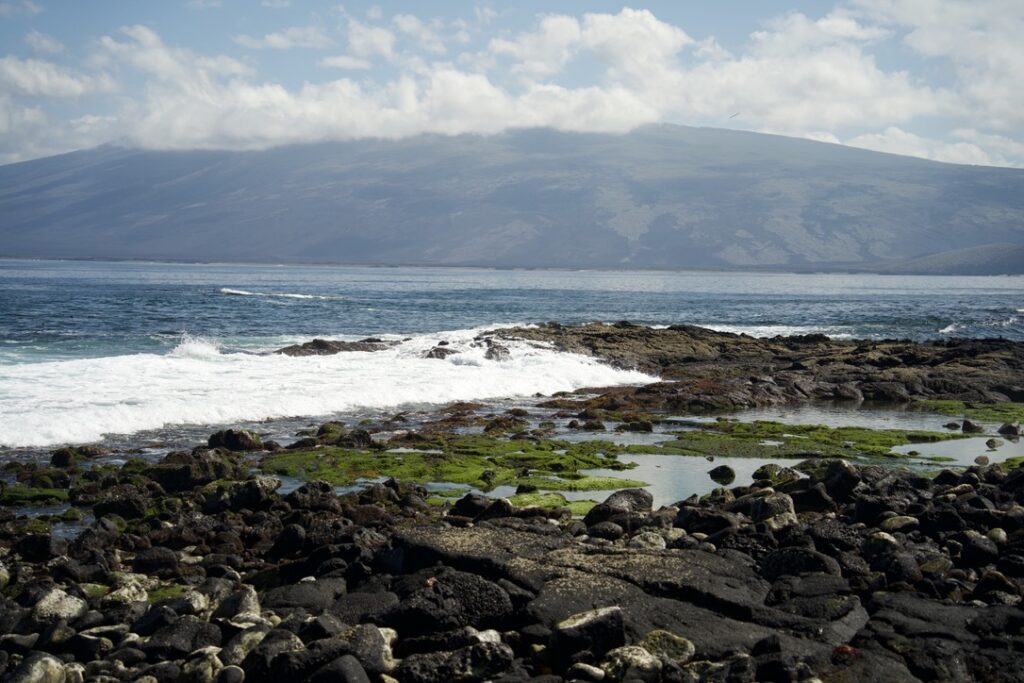

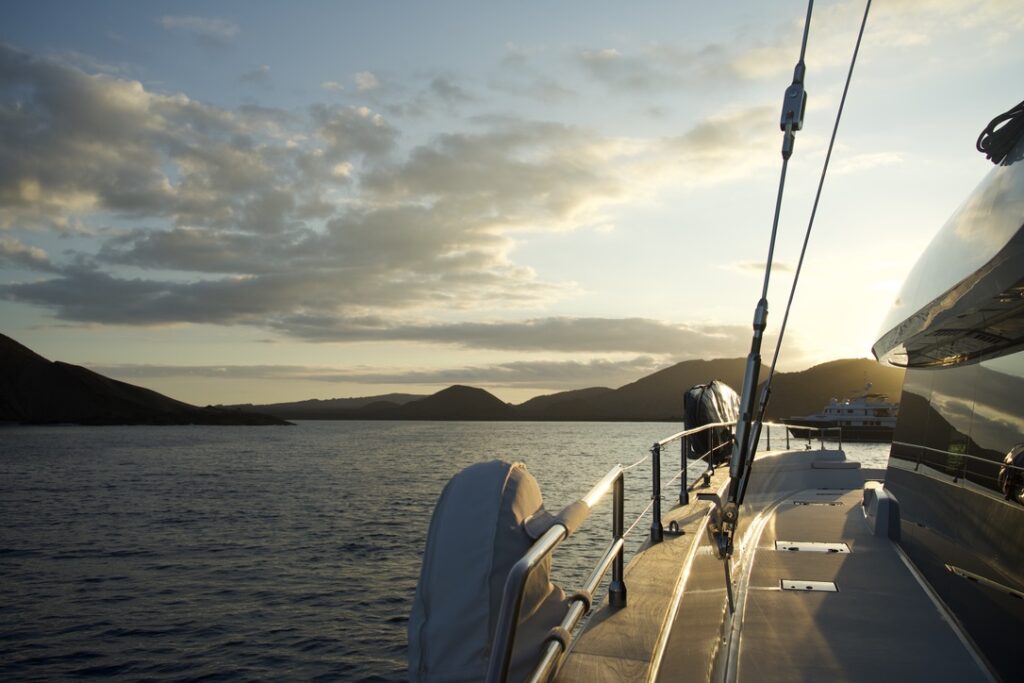
DAY 8: Punta Vicente Roca, Isabela
Leaving Punta Vicente Roca behind, we sailed along the northern coast of Isabela on our longest leg of the trip, heading toward the Sullivan Bay in Santiago. Our lookouts were up early, and this time, we were rewarded with the sight of two Orcas! We immediately slowed Bundalong and drifted with them as they swam around the yacht – he had caught them mid-hunt, a rare and exhilarating treat to witness these majestic creatures effortlessly commanding the seas. Reluctantly, we eventually tore ourselves away to continue our journey, only to be greeted an hour later by the unmistakable blow of a sperm whale!

As we passed around Isabela we crossed the equator, so naturally we had to induct the pollywogs onboard.

The celebration of crossing the Equator takes on diverse forms, depending on the crew and the participants involved. Yet, certain key elements remain consistent throughout these ceremonies. A fundamental aspect is the division of those who have never crossed the Equator, known as “Pollywogs,” and those who have successfully made the journey, called “Shellbacks” or “sons of Neptune.” Following the crossing, Pollywogs transition into Shellbacks and gain an audience with King Neptune. The crew often adorns various costumes, including that of Neptune himself, and sometimes Queen Amphitrite, Neptune’s wife, makes an appearance. Festivity, humor, and camaraderie characterize this memorable event. At its core, this tradition is a homage to Neptune, the mythical ruler of the seas. By paying respects to King Neptune, sailors believe they will receive protection and good fortune during their maritime endeavors. In earlier times, the initiation for Pollywogs was more rigorous and occasionally unpleasant. These novices might find themselves confined to the lower deck, subjected to rituals involving paint smearing and dunking head over heels in water.
Darwin, like others “Pollywogs” crossing the Equator for the first time, was visited by King Neptune and his court. “They then lathered my face and mouth with pitch and paint and scraped some of it off with a piece of roughened iron hoop, – a signal being given I was tilted head over heels into the water, where two men received me and ducked me, – at last, glad enough, I escaped.”
Our pollywogs were quite fortunate and were only force-fed ginger biscuits lathered with vegemite… washed down with rum, so, not a bad treat!
DAY 9: Sullivan Bay, Santiago
Back once more in the volcanic landscape of Sullivan Bay. This time our divers at Cousins Rock had a 10/10 dive, sealions, turtles, sharks, schooling barracudas and the elusive Mola Mola. Having been slightly disappointed we hadn’t managed to catch up with one on Isabela, here it swan directly over our heads!
In the evening, we once more made our way up the wooden stairways of Bartolome to look out over the calm anchorage.
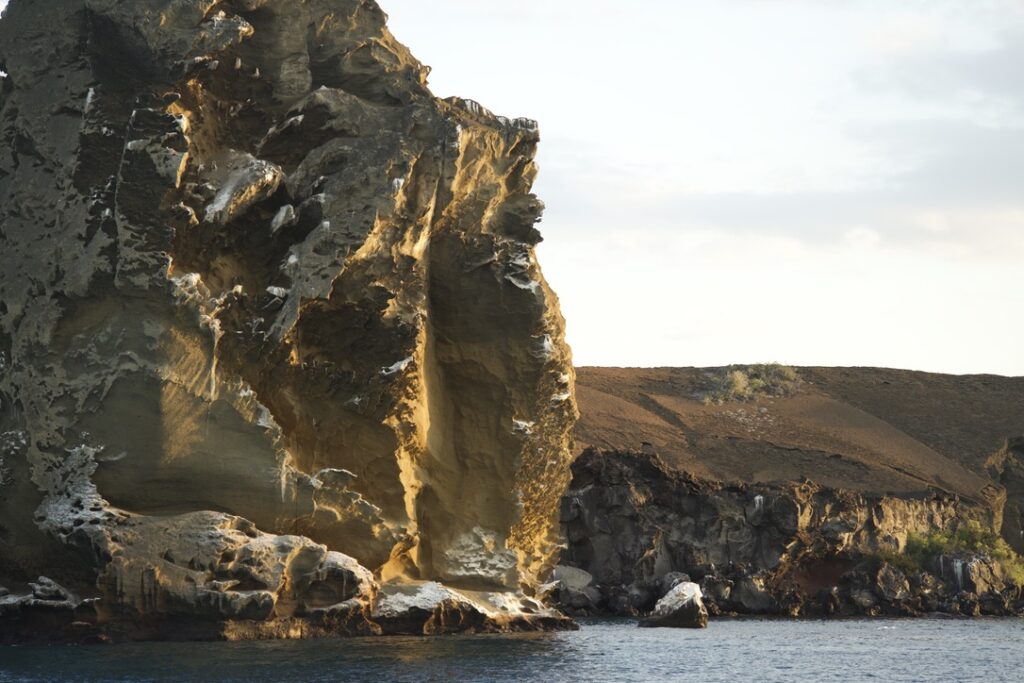
DAY 10: Rabida Island
We set sail to Rabida Island, anchoring mid-morning for a hike on the island’s red beach. Everything went according to plan, and after a lovely walk, we returned to Bundalong. However, on the tender ride back to the boat, we suddenly spotted Crcas! As if being guided, an adult and two juveniles, swan alongside our tender, playing in our wake. To our surprise, we even spotted a sea lion zooming around with the orcas— playing with fire, that was one very brave sea lion! The more daring Bunda-venturers jumped in with fins and snorkels and watched in awe as the whales swam gracefully around them.
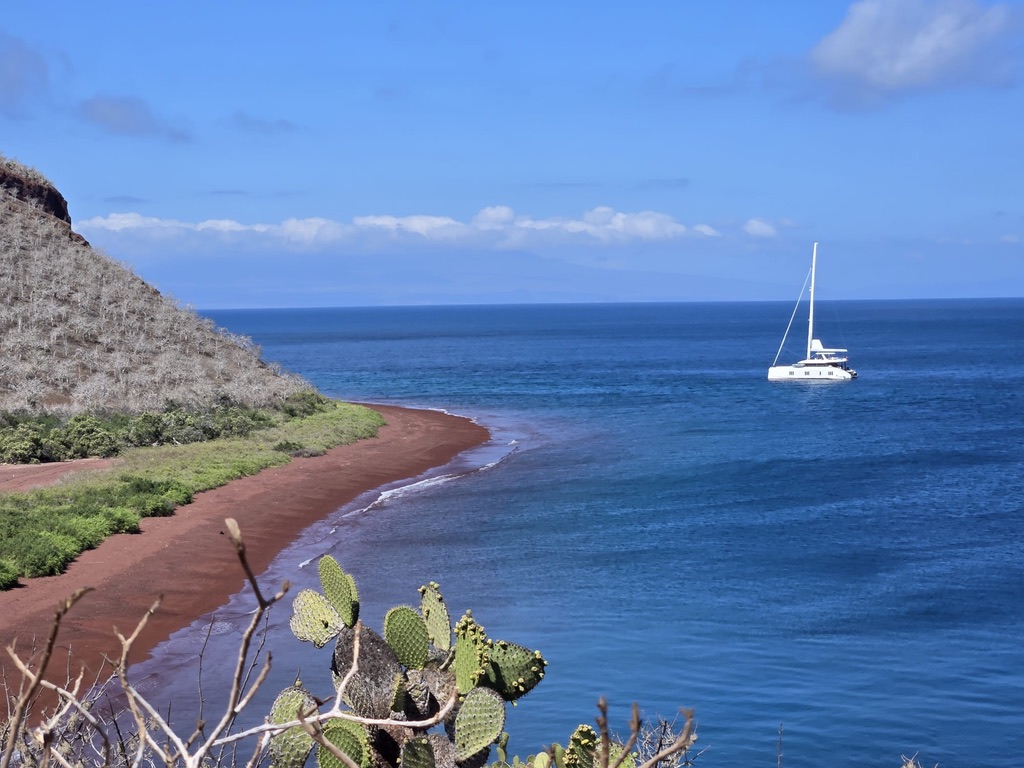
In the afternoon with sailed to North Seymour in preparation for diving the following day.
DAY 11: North Seymour and Mosquera Islet Dives
Our final day diving and our final day of our last Galapagos Adventure, and what a way to end things. All the usual suspect – sharks, rays, turtles, fish and sealions greeted us as we descended into the blue. Another two great dives and with heavy hearts returned to Baltra for a final farewell.

Afterwards….
With guests departed, we returned to San Cristobal to reprovision, pick up delivery crew and prepare for our next adventure – the Pacific Crossing to the Marquesas Islands, French Polynesia. Follow us on our next blog as we spend three weeks crossing the world’s largest ocean.
